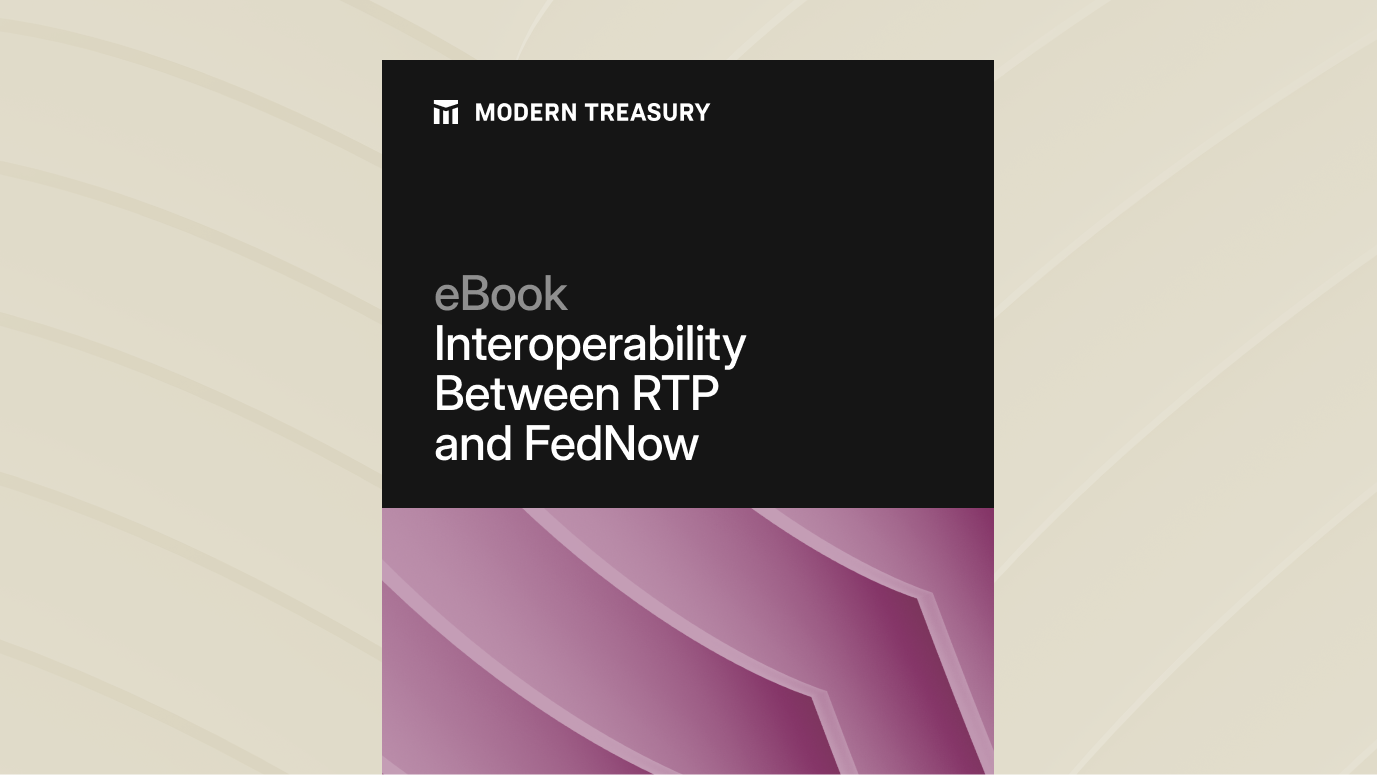Join us at Transfer 2025 to hear how industry leaders are building payments infrastructure for a real-time world.Register Today →
How Faster International Payments Work
In this journal, we'll discuss two of the fastest options for making cross-border payments from US-domiciled bank accounts and take a detailed look at how they work.

In the new era of payments, instant cross-border transactions have the potential to significantly impact the way money moves globally. But disparate currencies, varying payment rails, and differing international regulations for money movement can make international transactions tricky. While historically there hasn’t been an instant way to transfer funds between parties in different countries—and the US certainly has some extra catching up to do in this department—many countries are already implementing ways to effectively send and receive money internationally in real-time.
In the Eurozone, TARGET Instant Payment Settlement (TIPS) was launched in 2018 for cross-border payments made in euros. In 2022, TIPs expanded to include transactions made with the Swedish Krona, too. In Brazil, the Banco Central do Brasil (BCB) launched its PIX program in November of 2020 to allow for instant payments made by individuals, businesses, and even government entities to Brazil from anywhere. The UK’s Faster Payment System doesn’t support payments outside the UK quite yet, but it does support instant payments between England, Wales, Scotland, Ireland, and Northern Ireland, regardless of where senders and receivers bank.
In a recent webinar on Modernizing Payments, Jim Colassano of The Clearing House called instant international payments “the holy grail.” Here, we’ll take a deep dive into a few of the options for faster international payments and how Modern Treasury can support your business in utilizing them.
Making Faster International Payments With Modern Treasury
Modern Treasury’s payment operations platform allows companies to move money internationally in a handful of ways—and we are regularly adding support for new banks and payment rails, too. Let’s look at two of the easiest ways to move money quickly across borders: SWIFT and Global ACH.
Swift
The Society for Worldwide Interbank Financial Telecommunication, aka SWIFT, is a network designed for sending and receiving international wire transfers. With 11,000 participating financial institutions (FI), SWIFT uses a set of dedicated codes to transmit information about each transfer between FIs. SWIFT facilitates roughly $150 trillion in transactions annually.
Formed in 1973, SWIFT helped to standardize international funds transfers and help provide a more secure way of moving money, compared to the more traditional telegraphic transfers. Money transferred via SWIFT doesn’t physically move, but SWIFT transfers provide a standardized way of sending payment orders. For the purposes of anti-money laundering (AML) compliance, international wire transfers are closely monitored by the Office of Foreign Assets Control (OFAC), which is a branch of the US Treasury.
Currently, a SWIFT wire transfer takes 1-2 business days to process, as they are subject to cut-off times for banks, and have to be settled at both domestic banks and foreign ones. That being said, SWIFT transfers are currently still the fastest way to transfer money internationally—aside from using cryptocurrency to move funds.
While they offer speedier international transfers, SWIFT transactions come with a high price tag: between $25-$45 per transaction. Their cost makes them more feasible for larger value payments—where security is paramount—and the $25-45 is small, relative to the size of the payment itself. Thus, this type of transfer might work well for larger value payments where security and time-sensitivity is important, but they can be cost prohibitive for non-business critical payments.
It’s also important to note that the exact dollar amount received by a SWIFT transfer recipient can’t be 100% guaranteed, as these transactions often have to pass through intermediary banks that may also charge a fee for handling the transaction. Similarly, while a sender has to pay that $25-45 fee, the recipient of a transaction may also be charged for receiving a SWIFT payment, depending on their bank’s policies.
Let’s take a look at how SWIFT transfers work. Imagine you want to send an international wire transfer via SWIFT to a friend in Melbourne, Australia. To initiate the transfer you can go into a local branch of your bank, call your bank, or use your bank’s digital portal or mobile app. Let’s call your bank Modern Bank and call the bank you’re sending money to Kangaroo Bank.
To send the payment, you’ll need to provide:
- The recipient’s name and address
- The name and address of the bank receiving the money, in this case Kangaroo Bank
- Kangaroo Bank’s SWIFT code—also called their SWIFT ID or Bank Identifier Code—which ensures that the funds are routed to the correct branch of the right bank in the right country.
- The recipient’s International Bank Account Number (IBAN).
- The payment instructions (e.g., $1M USD to be received in AUD).
Modern Bank will use SWIFT to relay the payment information and instructions to Kangaroo Bank. If Modern Bank and Kangaroo Bank do not have a direct relationship, the instructions will also route the transaction through an intermediary bank. Once Kangaroo Bank receives the information, it will deposit money from its reserve funds into the correct account. Later, the two institutions will settle the payment, meaning they’ll adjust the account balances to reflect the transfer.
With Modern Treasury, if your bank supports SWIFT transfers then we can support initiating those payment types on our platform. And if your bank doesn’t support SWIFT transfers, we’re still able to support SWIFT payments via CurrencyCloud—which is similar to a digital wallet that allows you to send money via SWIFT wires.
Global ACH
Before we dive into what Global ACH is, let’s talk about why it’s needed.
For international transactions, you could theoretically set up a bank account in every country where your business needs to send money, as holding those international accounts would simplify the process for sending and receiving cross-border payments. The issue with this method, though, is scalability: there is underwriting and compliance in each region for each individual international account. Imagine you need to be able to send money to 5-10+ countries regularly, the process of setting up the bank accounts alone would be incredibly time and resource consuming. Global ACH is a much easier process to utilize instead.
To facilitate payments from US-domiciled accounts to accounts in other countries, Global ACH utilizes the local equivalents of ACH in different regions. This includes EFT in Canada, SEPA in Europe, BACS in the UK, or BECS in Australia. Settlement times for Global ACH transactions vary, depending on the payment rail being used outside of the US.
Though slower, on average, than a SWIFT transfer, Global ACH is also cheaper, typically costing only a few dollars per transaction (and, in the case of some banks, may even be free). This lower cost generally makes Global ACH useful for small dollar amount transactions and transactions that aren’t time sensitive or business critical.
Let’s walk through an example of sending a Global ACH transaction. Marco Mercantile, a used goods marketplace, has a bank account at JPMorgan, a US bank, uses Modern Treasury, and needs to pay one of its marketplace vendors in Europe.
Marco Mercantile uses Modern Treasury to create a payment order for their vendor in Europe. They’ll be able to see the current exchange rate between dollars and euros before the transaction is sent—this ensures that Marco Mercantile knows exactly how much money they are sending in USD and exactly how much their vendor will receive in EUR. Once initiated, Marco Mercantile is able to track and reconcile the payment just like any other transaction—though the payment itself will be sent from the ACH Network to SEPA.
For customers that use Modern Treasury, Global ACH payments can be initiated and reconciled just like any other transaction, using our website or app. Currently, Modern Treasury supports Global ACH for accounts held at JPMorgan Chase, Silicon Valley Bank, and Goldman Sachs.
Making International Payments Work For Your Business
The US is getting closer and closer to being able to facilitate widespread instant international payments and we want to ensure that your business is prepared to take advantage of everything that such speedy cross-border transactions can offer.
Modern Treasury is an operations layer that can simplify and streamline your business’ access to many different types of payments—including international faster payments, Global ACH, SWIFT, wire transfers, and more. Get in touch with our sales team to find out how we can help your business move money faster and easier.
Try Modern Treasury
See how smooth payment operations can be.







